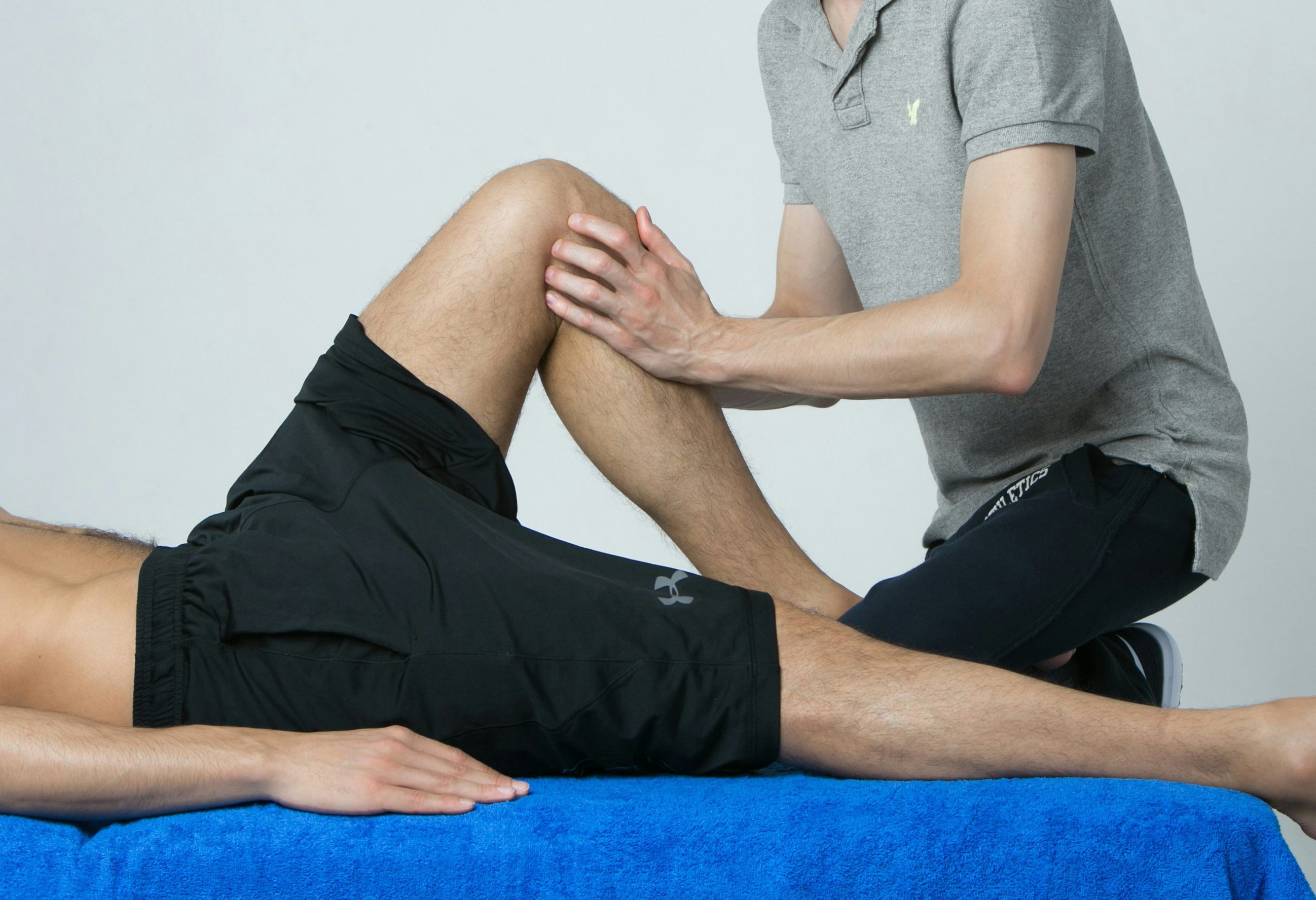The Benefits of Oncology Massage
Read time: 6 mins
At SLS Therapy, I believe that healing is about more than just treating illness, it's about supporting the whole person during a difficult time. That's why oncology massage is such a powerful and compassionate tool for people living with cancer.
Whether you've just received a diagnosis, are currently undergoing treatment or are in recovery, massage helps. It can comfort, reduce symptoms and help you reconnect with your body and mind.
In this post, we'll explore the many benefits of massage for cancer patients, how it differs from regular massage and how it can support your physical and emotional wellbeing at every stage.

What Is Oncology Massage?
Oncology massage is a non-invasive, specialist form of alternative therapy designed specifically for people living with or recovering from cancer. It's gentle, supportive and tailored to the individual with no deep tissue work, no discomfort, just safe, nurturing touch. This unique approach involves specialised techniques that are carefully designed to be safe and effective for individuals diagnosed with cancer. The treatment provides both physical and emotional support during a challenging time.
As a certified oncology massage therapist, I understand the complexities that come with a cancer diagnosis and I know that gentle techniques can help alleviate symptoms. Every session is adapted to your current health, treatment stage and how you're feeling on the day, ensuring a personalised experience that prioritises your comfort and well-being.

How Is An Oncology Massage Different from a Regular One?
While both types of massage aim to support overall well-being, some key differences set them apart. Oncology massage is specifically tailored for individuals who are undergoing cancer treatment or have a history of cancer. This gentle massage technique takes into consideration the unique physical and emotional challenges often associated with some symptoms that may be painful, ensuring that the techniques used are safe and effective.
In contrast, traditional massage may not address the specific needs of those dealing with the side effects of cancer. Therefore, understanding these differences is crucial for individuals seeking the most appropriate form of therapy to aid in their healing journey.
- Specialist Training
A certified therapist in oncology massage has undergone specialist training to understand cancer pathology, treatment side effects and how to safely adapt massage for medical conditions. A regular therapist may not be aware of these complexities despite being trained and qualified in an alternative therapy. These specific massage therapists are trained to help reduce numerous symptoms associated with individuals living with cancer. - Pressure and Technique
Regular massage often involves deeper pressure or vigorous techniques, such as sports or deep tissue massage. Oncology massage is a specialist form of massage that uses light, slow and mindful strokes, carefully adapted to suit a client's energy levels and comfort. A bespoke plan identifying a clients needs will ensure they get the help where they need it most. - Safety Considerations
– Oncology massage requires a thorough understanding of:
– Lymphoedema risk (especially after lymph node removal)
– Medical devices like ports or PICC lines
– Fragile skin from chemotherapy or radiation
– Bone fragility or risk of blood clots - Focus on Emotional Support
The specialist massage environment provides space for emotional healing, helping you feel held and supported through a challenging time. It is not just a gentler version of regular or a sports massage; it is a completely tailored approach grounded in compassion and clinical understanding. Massage helps many cancer patients experience a space where they can experience comfort and relaxation, nurture and support.

7 Benefits of Oncology Massage for People with Cancer
- Reduces Stress and Anxiety
Massage encourages the body to shift into "rest and digest" mode, which is essential for overall well-being. This state helps lower cortisol levels, the hormone associated with stress and promotes emotional calm. By promoting relaxation, this type of massage can provide significant benefits, such as alleviating anxiety, helping with nausea and insomnia and general feelings of discomfort to help you feel better while undergoing cancer and after treatment. - Relieves Pain and Discomfort
Massage for cancer pain relief uses gentle techniques to ease tension, nerve pain and muscle soreness, without overwhelming sensitive tissues. By utilising soft pressure and nurturing movements, treatment aims to enhance the overall well-being of patients. As a complementary therapy, it works in harmony with conventional treatments to aid relaxation and alleviate discomfort, creating a sense of tranquillity. - Improves Sleep Quality
This specialst massage supports deeper rest by calming the nervous system and easing physical discomfort that may interfere with sleep. By addressing both physical and emotional challenges, it can create an environment that encourages a sense of calm and restorative sleep, ultimately enhancing overall well-being and symptoms of insomnia. - Helps with Fatigue and Nausea
Many clients feel more energised and less nauseous after receiving this treatment, even if the relief is only temporary. The soothing effects of massage can help alleviate some of the side effects often associated with cancer treatments, providing a much-needed respite and improving their quality of life. - Supports Lymphatic Flow
Oncology Massage for lymphoedema after cancer encourages healthy circulation and can reduce swelling with light, rhythmic strokes. The gentle techniques used in this approach can enhance lymphatic flow and improve circulation, which is crucial for reducing swelling and improving levels of comfort. - Aids Emotional Healing
Time on the massage table often becomes a quiet space to process emotions, release tension, feel relaxed and not judged. This experience is particularly significant as it provides a safe haven for individuals navigating the challenges of pain, depression and fatigue. Massage is a gentle, therapeutic touch that promotes a sense of well-being, allowing clients to connect with their bodies in a nurturing way. This dedicated time not only aids in physical relief but also supports emotional healing, fostering a sense of peace and comfort. - Rebuilds Connection with Your Body
Cancer can cause people to feel disconnected from their bodies, leading to a sense of alienation and discomfort. Oncology massage plays a vital role in helping individuals reconnect with their bodies. By providing a gentle and compassionate touch, it fosters a nurturing environment that encourages self-awareness. This supportive practice encourages individuals to rebuild their relationship with their bodies and regain a sense of control.

Why Choose a Therapist Trained in Oncology Massage?
When receiving massage during or after cancer treatment, it's vital to work with a therapist who understands:
- How to adapt for surgical scars, ports, or PICC lines (these deliver medication directly into the veins)
- The effects of chemotherapy, radiotherapy and medications
- Contraindications like blood clots, low immunity or skin sensitivity
- The emotional and psychological impact of a cancer diagnosis
My approach is always compassionate, safe and grounded in specialist knowledge. I believe that you are never just a diagnosis, but rather a whole person and this allows me to address the unique physical and emotional needs of a person affected by cancer. This bespoke approach helps clients to feel more relaxed, safe in the knowledge that they are going to receive a special massage technique to help aid their recovery.
Is This Complementary And Alternative Therapy Safe During Cancer Treatment?
Yes. Oncology massage is safe when performed by a trained therapist. This gentle and soothing therapy focuses on the unique needs of cancer patients, ensuring that each session is tailored to provide maximum comfort and safety. During a full consultation, I assess your individual situation and design a treatment plan and massage routine that may include techniques like deep tissue massage, lymphatic drainage and reflexology to relieve any discomfort. If you are in any pain or discomfort due to cancer, I adapt every aspect of the massage to address your needs on the day, helping to reduce stress and enhance your overall well-being.
For more guidance, see Macmillan Cancer Support – Massage Therapy.

The Long-Term Benefits of Therapeutic Touch Treatments for People With Cancer
The impact of cancer doesn't end when treatment does. Many people continue to experience symptoms such as pain, fatigue, anxiety or lymphoedema, which can significantly affect their quality of life. Ongoing massage for cancer survivors offers valuable support as you transition into recovery and beyond, helping to alleviate these symptoms and promote a sense of health and wellbeing.
Book Your Oncology Massage at SLS Therapy
If you or someone you care about is affected by cancer, I am here to help, gently, safely and with compassion.
Because everybody deserves care and every person deserves to feel a little bit more like themselves again.
Contact Sarah at SLS Therapy for more information.





